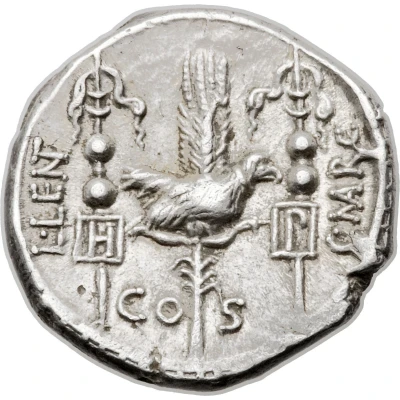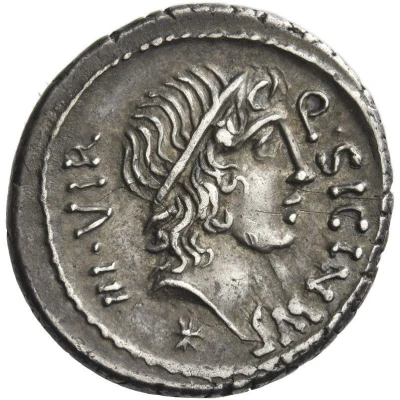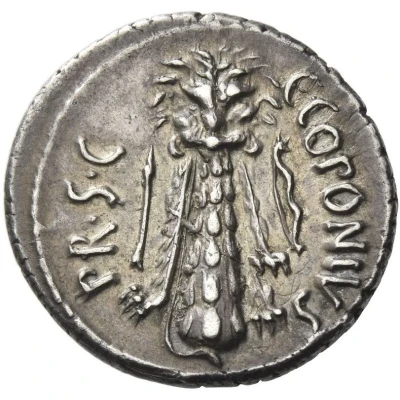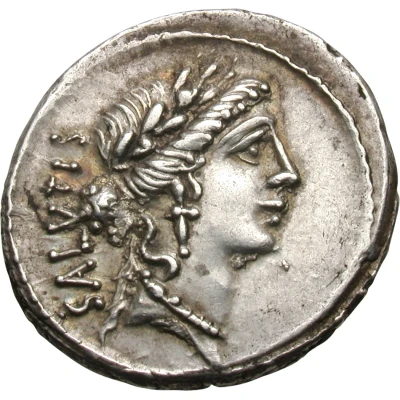
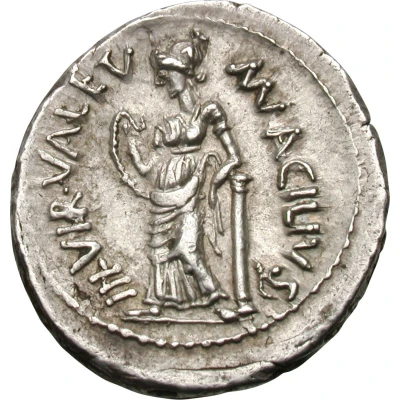

© Heritage Auctions
Denarius Acilia: Manius Acilius Glabrio; SALVTIS / MN•ACILIVS III•VIR•VALETV 49 BC
49 BC year| Silver (.950) | 3.65 g | 19 mm |
| Issuer | Rome › Roman Republic (509 BC - 27 BC) |
|---|---|
| Period | Republic (509 BC - 27 BC) |
| Type | Standard circulation coin |
| Year | 49 BC |
| Value | Denarius (1) |
| Currency | Denarius of 16 Asses (141 – 27 BC) |
| Composition | Silver (.950) |
| Weight | 3.65 g |
| Diameter | 19 mm |
| Shape | Round (irregular) |
| Technique | Hammered |
| Orientation | Variable alignment ↺ |
| Demonetized | Yes |
| Updated | 2024-10-06 |
| Numista | N#66909 |
|---|---|
| Rarity index | 88% |
Reverse
Valetudo standing left, resting left arm on column and holding snake in right hand; on left, inscription with TV in monogram.
In right field, moneyer mark with MN in monogram.
Border of dots.
Script: Latin
Lettering:
MN•ACILIVS
III•VIR•VALETV
Translation:
Manius Acilius Triumvir (Manlius Acilius [Glabrio],
[Monetary] Triumvirate)
Valetudo
Edge
Plain
Comment
The gens Acilia was a plebeian Roman family which flourished from the middle of the third century BC until at least the fifth century. The first member of the gens to achieve prominence was Gaius Acilius Glabrio, who was quaestor in 203 and tribune of the plebs in 197 BC.Valetudo is the Roman equivalent of the greek goddess of health Hygieia.
Interesting fact
One interesting fact about this coin is that it features a rare and unique design, with the portrait of Manius Acilius Glabrio on one side and the goddess Salus on the other. This coin was minted during a time of political turmoil in Rome, just before the assassination of Julius Caesar, and its design may have been a statement about the political climate of the time. Additionally, the coin's high silver content and weight make it a valuable and sought-after collector's item among numismatists.
Price
| Date | Mintage | VG | F | VF | XF | AU | UNC |
|---|---|---|---|---|---|---|---|
| ND (-49) | - | - | - | - | - | - |
Values in the table are based on evaluations by sales realized on Internet platforms. They serve as an indication only for Denarius (Acilia: Manius Acilius Glabrio; SALVTIS / MN•ACILIVS III•VIR•VALETV) (49 BC) coin.

